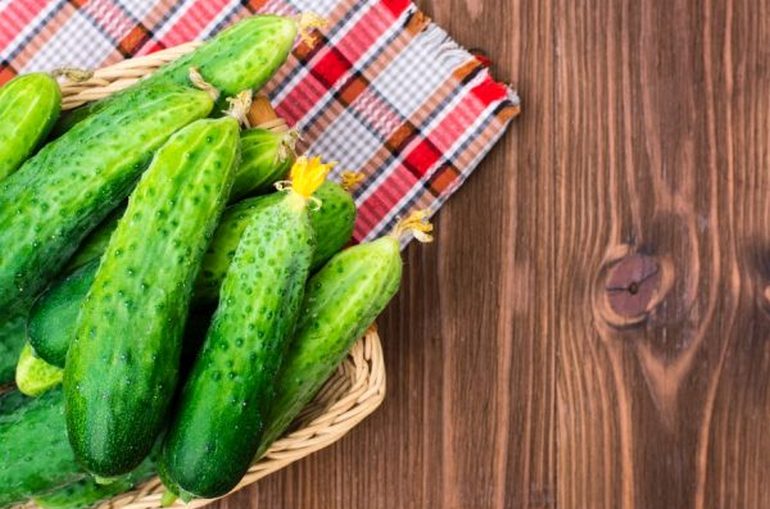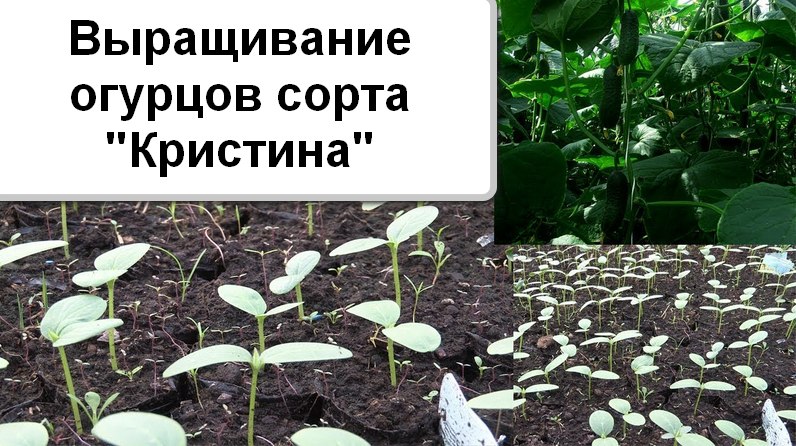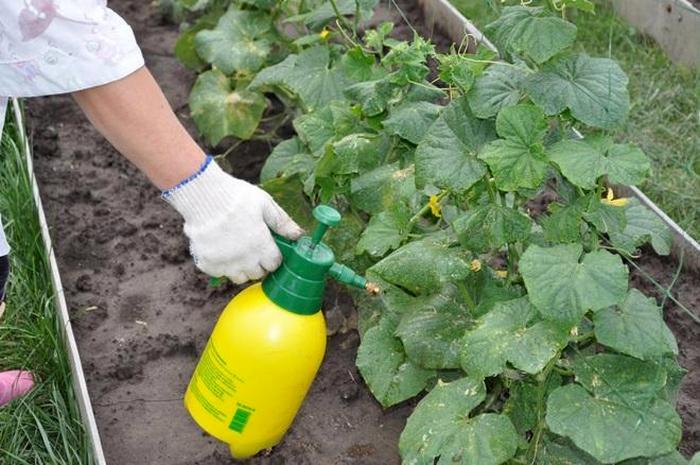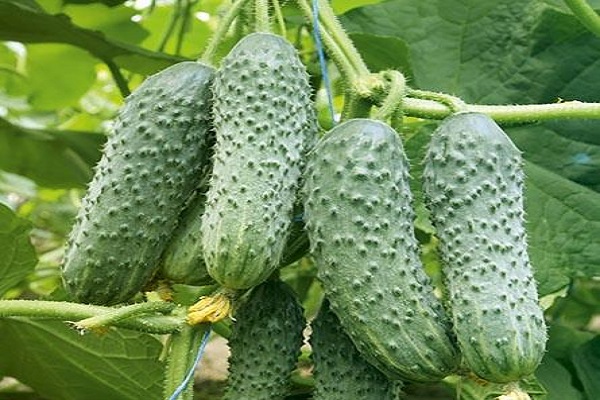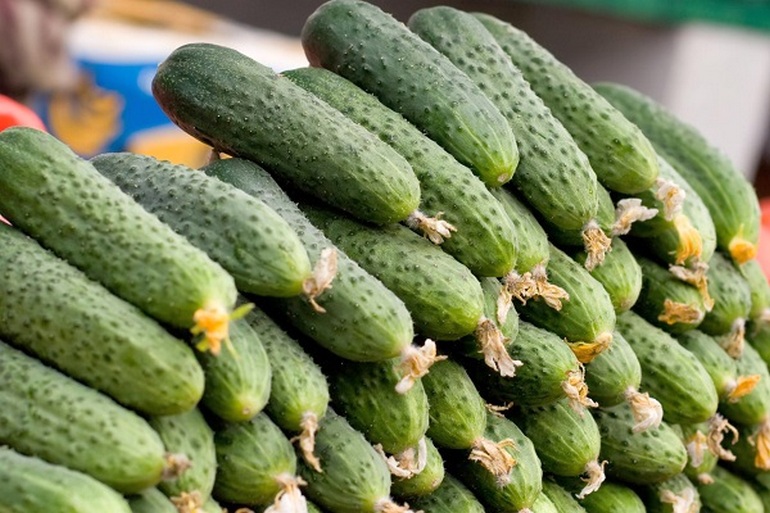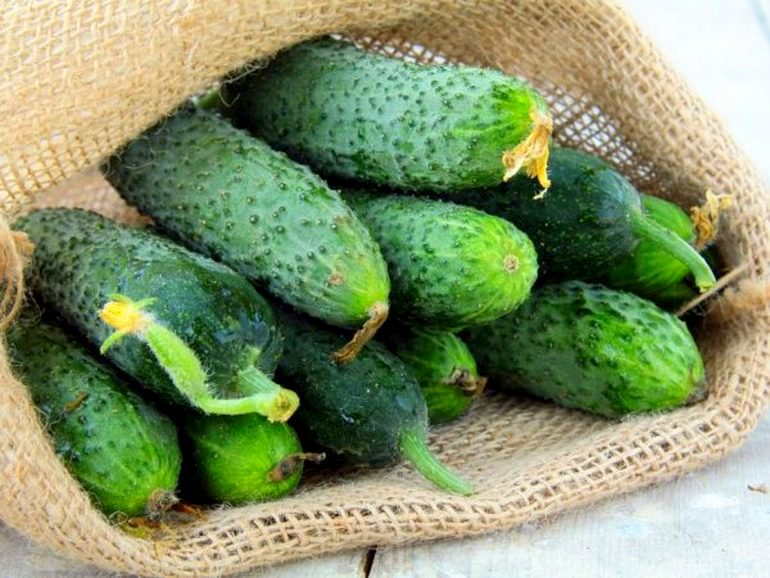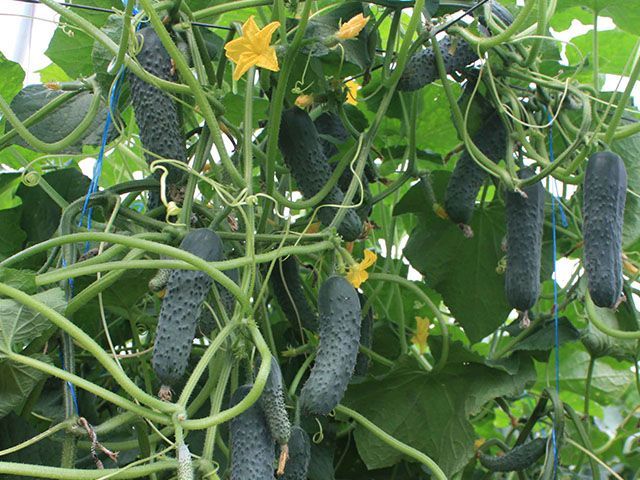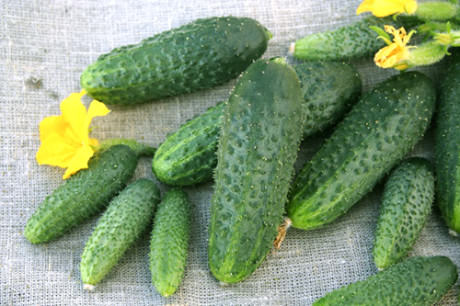Cucumbers are one of the most popular vegetables in the world. They are eaten fresh, pickled. Breeders are constantly developing new varieties in an effort to increase productivity and resistance to external threats: diseases, temperature extremes. Hybrid varieties - the result of crossing - are designated F1. Their seeds are unsuitable for subsequent planting, as they lose their properties. The cucumber Christina also belongs to hybrid varieties. This is a fruitful early ripening variety.
Advantages and disadvantages
The advantages of the variety:
- high productivity;
- disease resistance;
- versatility of use.
The disadvantages include the fact that the plant is pollinated by bees, therefore it is not suitable for growing in a greenhouse. In addition, this variety is not suitable for growing pickles.
Fruits are 8-10 cm long, 2.2 cm in diameter. The weight of cucumbers is approximately 50-90 grams. Cucumbers Christina taste good, without bitterness and voids inside. The skin is covered with small tubercles with white thorns. Gherkins need to be harvested approximately every two days.
Growing features
Planting Christina cucumbers is possible both directly into the ground and through seedlings. Seeds are planted in a greenhouse or at home in early May. And the seedlings are transferred to open ground when the daytime air temperature is at least 18 degrees. At this point, the stems should have 2-4 adult leaves.
Cucumbers are thermophilic, so seeds can be sown into the ground only when the threat of frost has passed, around mid-May.
Cucumbers love abundant watering, especially during the formation of the ovary. You need to moisten the soil with warm, settled water, otherwise there is a risk of hypothermia of the roots.
Watering or rain can cause crusting on the ground, so it is important to loosen the soil regularly. Since the roots are shallow, you need to do this very carefully so as not to damage them.
Cucumbers grow in any soil, but it needs to be fertilized. Even if the soil is rich in nutrients, fertilizer is applied at least once a season during fruiting. For this, potash or nitrogen fertilizing is used. Also, as a fertilizer, you can use an infusion of onion peel, milk whey.
With proper care, the first fruits can be harvested after 42 days. About a week before the start of fruiting, varietal cucumbers must be properly cut. The formation of bushes allows you to increase the yield. The lower side shoots are removed.
Hybrid varieties are not immune to attacks by aphids and slugs. For preventive purposes, it is necessary to properly prepare the soil for the winter. Dig up the ground before frost and leave it until spring to freeze. This will eliminate all pests. You can also plant onions, garlic or dill along with cucumbers. These plants repel pests. And the leaves affected by aphids can be cut off or sprayed with a weak solution of laundry soap.
This type of cucumber is unpretentious in care, therefore it confidently competes with other parthenocapic varieties. They can be grown both on private plots and on an industrial scale.
